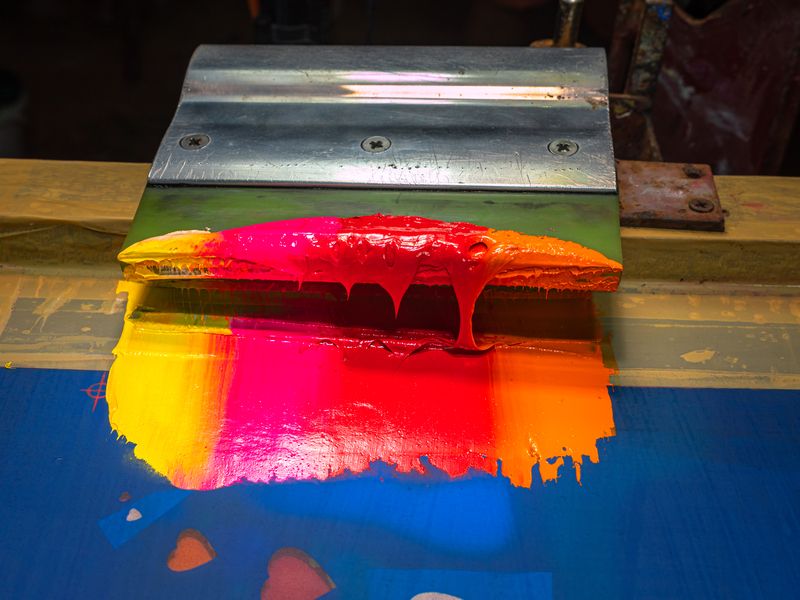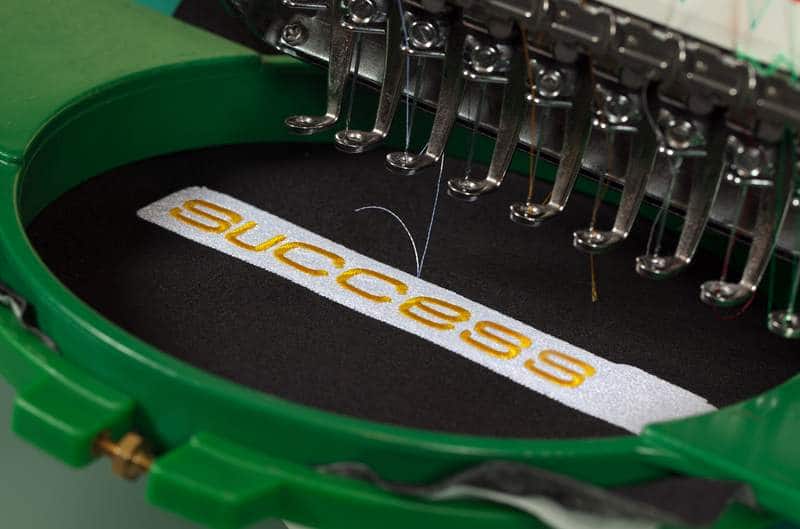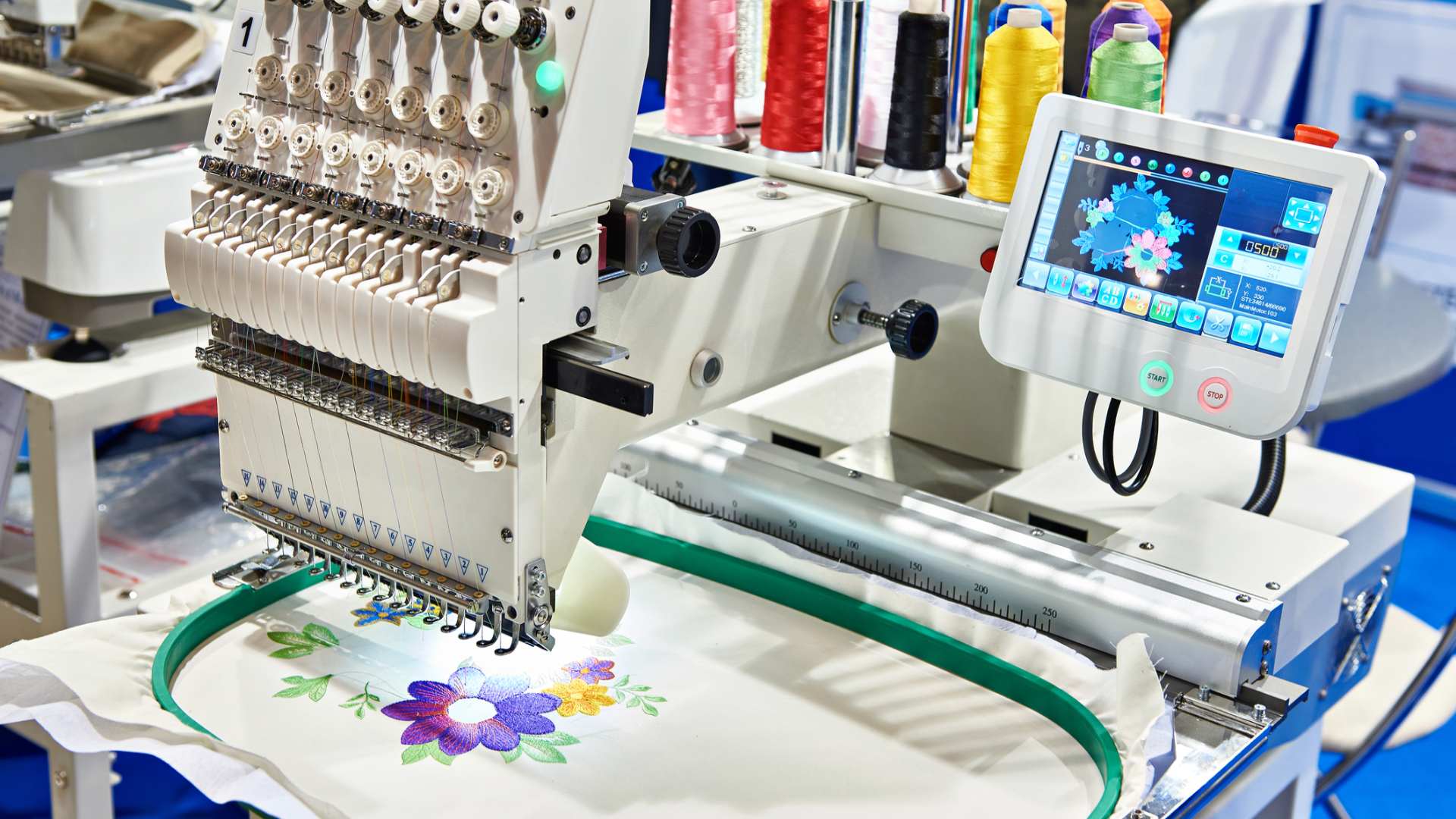Embroidery and screen printing are your two basic options for adding logos and graphics to garments and other textiles. Before deciding whether embroidery or screen printing is best for you, consider what each can offer you. Which is better for a t-shirt?
Embroidery employs stitches with different thread colors, while screen printing uses ink. Embroidery provides a higher perceived value and a more professional appearance. Screen printing has a more casual appearance and is commonly employed on sportswear and t-shirts.
Deciding if you want to do embroidery or screen printing, there are some vital factors you need to consider. Take a look at the following variables and choose based on these:
Is Embroidery Or Screenprinting Better For T-shirts?
Screen printing can be more cost-effective in most cases, especially when promoting local businesses, and it is frequently better for larger patterns.
You can pick embroidery to be the more durable alternative. It may give professional effects for uniforms and other goods. Screen printing has a more casual feel, which is one reason why screen printing is best for t-shirts.
The Price Difference Between Embroidery And Screenprinting
One thing to remember is that neither choice is necessarily the cheapest. Which one is most cost-effective will be determined by several criteria. Consider the design’s complexity, the size of the layout, and the quality of the apparel you wear. If you choose embroidery, you will usually look at flat-rate costs that don’t depend on how many colors are in the design.
However, the number of colors makes a big difference with screen printing. Each additional color necessitates the creation of a new mesh screen, which raises the cost. Most embroidery companies will allow 15 colors at little to no extra cost. However, more oversized logos and designs are cheaper with screen printing, and large orders can also reduce prices.
Logo Or Design Art On A T-shirt
Both embroidery and screen printing requires good quality artwork. You need a good quality design for a crisp-looking design on your embroidery. If the definition isn’t clear, it will impact the setup quality.
Screen printing artwork is used to print a film, which is then used to burn a screen for each color in the design. For multicolor designs, artwork must be in distinct layers. After each color, the ink must dry before doing the next color.
Each color may be printed individually and be clear enough to get a clean print. Embroidery is limited to a width of 25 centimeters, whereas images can be printed up to 30 centimeters; hence we usually choose screen printing for larger patterns.
Embroidery and screen printing both use a color chart for each area of color. In the artwork, transform the color information from color mixtures such as CMYK or hex colors to thread or ink colors.
Both thread and ink colors can match PMS colors (Pantone Matching System). However, exact thread matches don’t exist for all PMS colors. If you want your colors to fade into each other, it is easier with printing than with tread.
Material Differences When You Embroider or Screenprint

Embroidered logos are ideal for high-quality uniforms that you want to last. Polo shirts with logos and perhaps even names stitched onto one side are a classic choice. However, choose screen printing if you require an oversized logo on the back of the shirt.
Screen printing may be preferable for t-shirts and other thin or stretchy fabrics. Because printing does not produce the same stress as stitching, the material does not pull up. Screen printing does not cover the material that is ruff or furry well.
Screen printing is likely the best option if you want to personalize t-shirts, sweatshirts, and other similar things. Screen printing can also be good to print more prominent logos.
However, embroidery is the most durable and sophisticated option for your logos for different garments, including polo shirts, outerwear, and caps. It has a nice appearance and will last a long time, and it can be used on a wide range of garments and other items.
Which One Will Last Longer, Embroidery Or Screenprinting?

Another consideration is durability, and embroidery is frequently the superior option. An embroidered design sewn directly into the fabric will endure considerably longer than a screen-printed design produced on top of the material. One disadvantage of screen printing is that it might break and fade over time. Damage is prevalent if the clothing is not well cared for, including washing it gently.
On the other hand, embroidery is less prone to fade or reveal damage. It can last a long time if the stitching is of high quality. If a screen-printed garment is washed at the wrong temperature or pressed on the wrong side, it can be damaged instantly. Embroidered logos do not have these issues, although the stitching can sometimes become snagged or torn.
Conclusion
Embroidery is the most acceptable option for business shirts, polo shirts, hats, and jackets. Screen printing is ideal for t-shirts, hoodies, and more prominent logos.
Both screen printing and embroidery have advantages, but a few factors to consider before deciding which is best. Before determining which one is ideal, consider the size of your logo design, your budget, the goods you want to personalize, and the volume of your order.
My choice is screen printing for most logo shirts and company apparel that is casual, such as t-shirts. I choose embroidery for polo-style short and long-sleeved shirts as well as caps. Therefore, in my experience, screen printing wins for t-shirt printing.
Bryan E. Robinson is the former owner of TshirtGrowth. He has sold t-shirts since 2006 through dropshipping, screen printing, vinyl printing, DTG, Print on Demand, and more. Bryan has created his own t-shirt designs through Photoshop, Canva, and other platforms, as well as worked with freelancers to create many of his designs. Besides t-shirts, Bryan has over 18 years of experience in online marketing with eCommerce, B2B SaaS, B2C products, and more.


